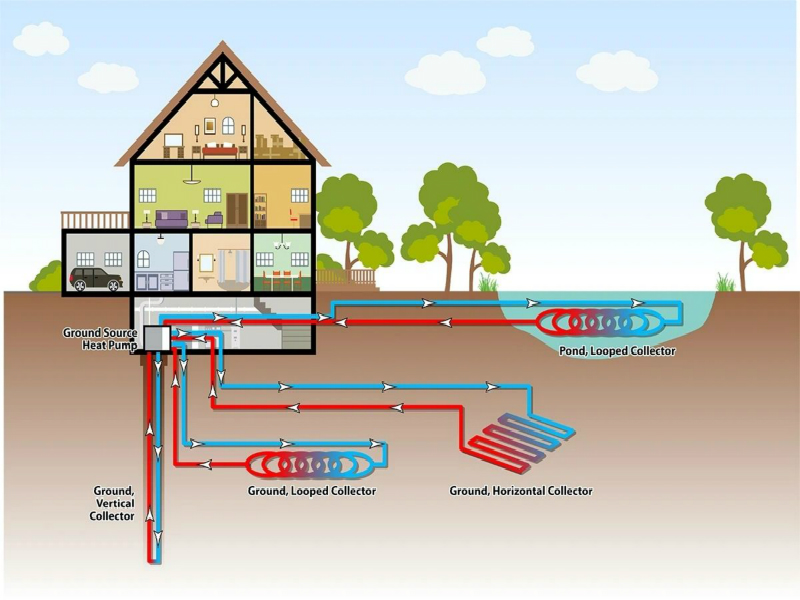The fact that ground source heat pumps work by extracting solar energy stored in the ground means they can be installed virtually anywhere. The typical ground source heat pump system is generally made up of four basic components – the ground loop (which collects heat from the ground), the heat pump (which raises the heat to an appropriate temperature and transfers the resulting heat to the home), the heat distribution system, and the hot water heater.
1. Assess Your Home
Perhaps the most important first step in the design of a ground source heat pump is adequate planning and preparation.
Have an installer visit your home and appraise exactly what type of heat pump, energy supply source, and energy distribution would be the best fit. The installer will also evaluate your domestic hot water requirements, existing exchanger and heating systems, current level of insulation in the home, as well as the geology and hydrology of the soil in your land.
Only after gathering all this information, would your installer be able to draw up a building heat load analysis and plan a well-designed ground source heat pump system for your home.
2. Excavate Loop Fields
Thereafter, your contractors will perform the excavation of horizontal or vertical loop fields so that later on pipes can be buried in the soil. The excavation process takes about one to two days, on average.
3. Install the Pipes
The contractor will then install the pipes in the buried loop fields, which will later be filled with a mixture of water and antifreeze solution that will act as a heat exchanger.
4. Modify the Heat Distribution Infrastructure
Then, your contractor will modify the ductwork and, if necessary, replace your old heat distribution infrastructure with a newer one. Ideally, this will be underfloor heating as this usually works best in conjunction with ground source heat pumps. For a one-man team, this can take up to three to four days to complete.
5. Install the Heat Pump
Lastly, your installer will connect the heat pump to the ductwork, the ground loop, and possibly the new in-floor heating system. Before turning on the heat pump for the first time, it is important to observe the following: water flow from the ground exchange loop, air temperatures, and amp draw on the heat pump.
6. Maintain the Heat Pump in Good Condition
The good news is that because ground source heat pumps have very few moving parts, usually very little can go wrong. Having said that, it is your responsibility to make sure that the heat pump is in good condition for as long as possible. Remember to perform seasonal adjustments to ensure that your heat pump operates as efficiently as possible during both heating and cooling periods.
Measuring the Performance of Ground Source Heat Pumps
The heat output (kW) in relation to the electrical input (kW) is known as the “coefficient of performance” (CoP). Typically, a ground source heat pump has a CoP of 4, which in broad terms means that for every 1kW of electricity used to drive the heat pump, 4kW of heat is produced for space heating and domestic hot water.
For instance, a 200m² house that uses 11,000 kWh of energy for heating purposes and another 4,000 kWh for domestic hot water will need (11,000 + 4,000) / 4 = 3,750 kWh of electricity to run a ground source heat pump with a CoP of 4.

Post time: Mar-16-2022

